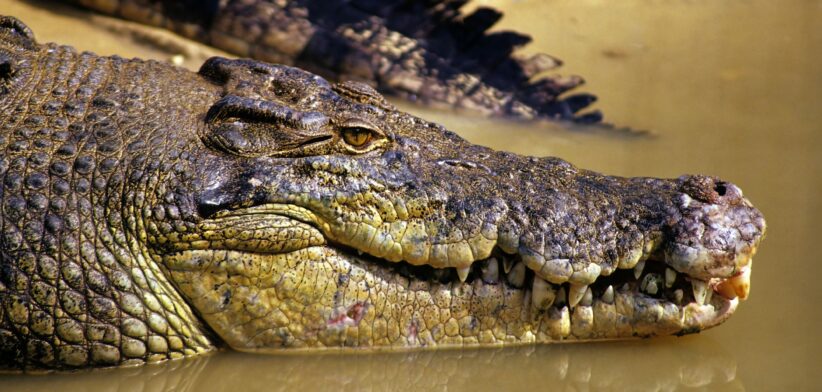It would cost almost $90m and drive the species back to being critically endangered, for a crocodile culling program to have any impact on the number of fatal attacks in northern Australia.
New research from Charles Darwin University found education and community awareness, removal of problem animals and exclusion areas were more effective in reducing saltwater crocodile attacks in the Northern Territory than a widespread culling program to reduce crocodile numbers.
Lead author Dr Cameron Baker said the study outlined why culling the reptiles to reduce density was not a cost-effective, or efficient solution, in reducing crocodile attacks.
Dr Baker said the research assessed how well crocodile and human density correlated with the frequency of saltwater crocodile attacks on humans in the Territory over the past 50 years.
He said data analysis showed that between 1979 and 2022, there were 76 crocodile attacks, of which 30 percent were fatal.
“The rates of attacks stabilised from 2009, despite crocodile density and human population continuing to rise, with a 10 percent decrease in the frequency of attacks over the following decade.”
Dr Baker said the decrease in attacks corresponded to NT residents and tourists changing their behaviour around waterways as crocodile numbers increased and government education strategies and programs to removing problem crocodiles.
He said the result of these actions proved awareness and problem crocodile removal was more effective at reducing attacks than any widespread culling program could achieve.
“Our models predicted that the NT crocodile population would have to be reduced by as much as 90 percent to reduce the crocodile attack frequency by one attack per year,” Dr Baker said.
“If widespread culling to reduce density was the prime strategy to reduce crocodile attacks, then the population would need to be driven to very low levels to see any significant reduction. This is because the risk of attacks on humans only decreases once large crocodiles are completely extirpated from an area.”
Dr Baker said culling to such an extent would push the species back into the critically endangered category and was also not cost-effective.
He said based on the current NT crocodile management budget, culling crocodiles humanely would cost $975 per crocodile.
“Assuming these operational costs remained constant throughout the culling period, it would cost $87,750,000 to cull 90 percent of the NT crocodile population humanely, achieving a 48 percent reduction in crocodile attack frequency,” he said.
“In comparison, between 2013 and 2016, the Northern Territory Government spent $250,000 on the ‘Be Crocwise’ educational campaign.”
He said the data indicated attacks were driven by a combination of human complacency and human activities in and around the water.
“Between 2011 and 2021, humans were 363 times more likely to be severely injured or killed in a motor vehicle accident than by a crocodile in the NT,” he said.
“Most victims of crocodile attacks, 90 percent, were local to the NT. This highlights the importance of modifying human behaviour to reduce the risks of attacks by large predators such as crocodiles.”








